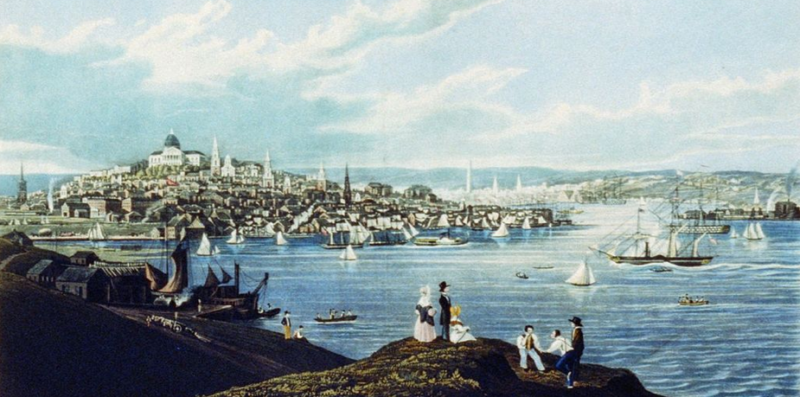The World Health Organization asserts that, for the first time in human history, more than half of the world’s population lives in urban areas. The Atlantic compares the economic power of New York City with that of Australia. The Organisation for Economic Cooperation and Development (OECD) recommends that countries harness the economic might of their capital cities.
Nations, meanwhile, may be losing popularity as a prevailing center of government and identity. Last year, a record number of Americans renounced their citizenship and moved abroad. Statistics such as these crop up in UN reports, media debates, and the halls of academia to pose the question: will the 21st-century city replace the nation-state?
A historical perspective inverts the question: how did the relatively young nation-state model come to supplant the longstanding tradition of urban governance? After all, ancient Athenian democracy, seats of early modern empires, and New World colonies all assumed urban forms. Only during the 19th century did nation-states begin to eclipse city-states throughout the world.
Mark Peterson, Professor of History at UC Berkeley, tells the story of the prominence (and ultimate decline) of city-states in his book, The City-State of Boston (Yale University Press, forthcoming 2016). Professor Peterson came to Berkeley in 2007, having written extensively about religion and the economy of colonial Boston and the greater New England region. But his latest project, inspired from reading travel journals and diaries from the colonial era, takes a different perspective, as he dislodges the city of Boston from its iconic place in the history of the U.S.
“The people I am writing about were far less interested in the development of the New England interior than what was going on in Germany, France, and Spain,” he says in an interview. “They were really fascinated by and connected to these other parts of the world.”
Early Bostonians traveled to capital cities and university towns throughout Europe. There they encountered cultures both fascinating and familiar. Vibrant trade networks interwove the interests of merchants from Boston, London, Hamburg, and Saint Dominique. Early modern maps of the Boston position as one of the westernmost points of a maritime world, reserving little space for inland territories. City-dwellers today might recognize their own past in this urban, cosmopolitan Atlantic society.
Bostonians preserved local commitments despite their integral ties to Europe, the West Indies, and other New World ports. From the 17th to the 19th centuries, Boston was a largely self-governing city-state within a confederation. Bostonians built a fledging welfare state, and residents took self-governance seriously. They deemed their Senators in the U.S. Congress “ambassadors”. But Boston never attempted to secede from the U.S. Instead, it drew on a long tradition wherein city-states organized themselves into leagues of mutual commerce and defense—or in this case, the United States of America.
When and why did the city-state finally fall? Peterson’s “alternative history” of Boston offers a surprisingly late answer. The city-state survived the Declaration of Independence. It persevered despite the political reorganization of the colonies after the ratification of the Constitution of 1787. Not until the mid-19th century did the city-state collapse due to pressure from the Southern slave economy and the U.S. Civil War. Boston was never the seed of the United States, as so many textbooks would have it. Rather, the expansion of the United States dismantled the city-state of Boston.
Similar events occurred throughout Europe. Imperial wars and national unification consumed many once-thriving city-states like Venice and Genoa. “Not surprisingly, there was a tremendous amount of sympathy, interconnection, and political support among Bostonians for those European city-states during their struggles,” Peterson says. “There is a real sense that the vestiges of republicanism are in these city-states that are trying to sustain their autonomy in the face of France and other dominant powers.”
Do any traces of the city-state survive today? One city-centered institution persists on a scale that evokes the glory days. “The strongest believers in the model in the United States today are the professional sports franchises,” he says. “That’s how they view the world. You have the San Francisco 49ers, but they’re really the Bay Area 49ers. They organize around metropolitan units, both cities and their hinterlands.”
A city-hinterland unit of governance could very well resurface. To illustrate the value of city-states, Peterson sometimes asks students to name their U.S. or California Congressional representatives and the number of people in their congressional district. Few can answer. “I ask these questions not to embarrass anyone, but to suggest the extreme plausibility of their not knowing the answers. Every member of the California State Senate represents about one million people, which is nuts. This is why it means nothing to students. It’s not representation at all.”
Governing best might mean governing locally, argues Peterson. “I don’t mean in all things, but ensuring that the trash is collected, that your kids go to good schools, that you have parks and sanitation…. Polities could organize themselves using a simple measure: human vision,” he suggests. “I love going up to the hills, and you can see the Bay Area…. [Y]ou can see the realm governed” under a city-state model.
Urban governance does pose serious problems for the contemporary world, he concedes. Colonial Boston banished destitute migrants from its domain, and the society was premised upon religious and social exclusivity. A contemporary world of city-states could unearth some of these darker sides of urbanity on a much larger scale. But contemporaries still could learn much from colonial Bostonians. “They took care of their own,” Peterson emphasizes. “A New Englander might say: ‘If everyone behaved like this, we’d have utopia.'”



